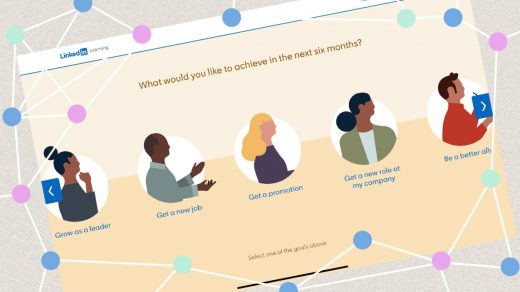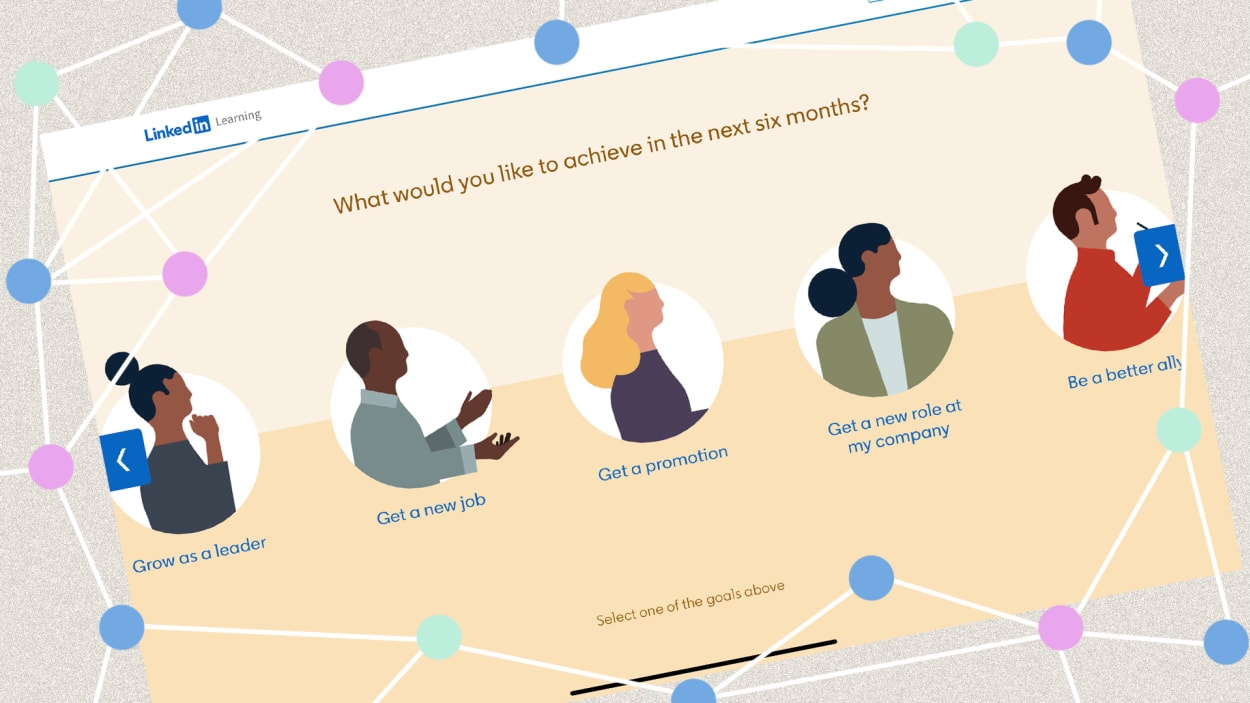How LinkedIn got serious about skills
When LinkedIn launched in 2003, the very idea of sharing your employment history and educational background in public was a bit of a mind-bender. But as the service boomed, millions did just that. LinkedIn went on to become a primary tool used by companies and recruiters to find job candidates. Ever since, it’s had a positive impact on countless careers.
Still, when LinkedIn members summarize their experience, they’ve typically done so in the way employers expect—even though that doesn’t necessarily convey their skills to best advantage. The company has been bothered by that fact for years.
“The more you watch companies recruit, the more you realize that we are rooted in processes that start with with ‘What school did you go to? Where did you work? What role did you have?’” says Dan Shapero, LinkedIn’s chief operating officer. “What we realized is that, in fact, there are tons of people out there in the world that have critical skills that aren’t being found. And when you look at why they’re not being found, it’s because they don’t have the traditional markers [that help] companies know how to find what they’re looking for.”

Recently, several fundamental shifts in the workforce have made it even clearer that classic résumé fodder doesn’t tell the whole story about a candidate’s suitability for new jobs. One of these changes is the widespread desire by employers to diversify their talent pools, a goal they can’t achieve by finding candidates the same way they always have.
LinkedIn’s own data showed that “living in a high-income neighborhood, going to a top school, working at a top company can give folks a 12-times advantage in gaining access to opportunity,” says VP of engineering Ya Xu.
Another new twist has been the impact of the COVID-19 pandemic. Along with all the impact it’s had on work, it led to many workers seeking new ways to use their existing skills as well as opportunities to acquire new ones—either because their old industries were reeling or simply because they craved more rewarding careers. LinkedIn calls this ongoing phenomenon “the Great Reshuffle.” One early example of the company’s response: In June 2020, it began offering 650 courses for free to help members sharpen their digital skills.
More efficient and equitable
Given that LinkedIn’s own goal, as stated in its vision statement, is to “create economic opportunity for every member of the global workforce,” it saw an opportunity to nudge hiring in a positive direction—maybe even a responsibility. By and large, hiring hadn’t caught up with these new dynamics. That led LinkedIn to ramp up its effort to nudge the whole field in a positive direction. “For me, when I’m looking at this massive labor market moving, I wonder, ‘How do we make this more efficient and more equitable?’” says CEO Ryan Roslansky. “We have to change the way people think about who they hire.”
The company already had some of the necessary pieces in place. For example, its LinkedIn Learning feature—which got its start with the 2015 acquisition of training giant Lynda.com—offers 16,000 online courses on everything from Excel basics to advanced digital marketing. “If you want to move from [being] a cashier to a customer success rep, there’s already an overlap of 70% of your skills,” says Tomer Cohen, chief product officer. “There’s a couple of skills you need to learn. You can learn them on LinkedIn and get that opportunity.”
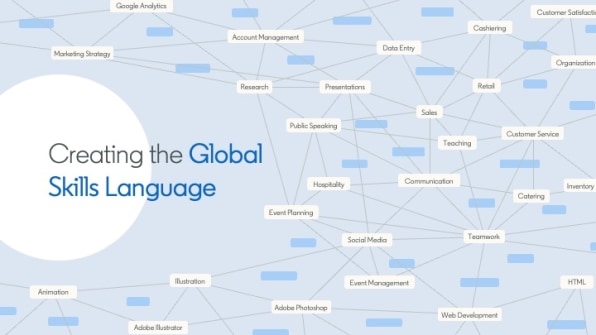
Still, raising the profile of skills on LinkedIn required some ground-up rethinking of the platform. “Realistically, we’ve always known it’s hard,” says Hari Srinivasan, VP of product management. “We’ve skimmed our knees on this problem a bunch of times.” One early foray was the 2012 introduction of “endorsements,” which let people you’re connected with tag your core competencies with a click; today, this feature is even known as “skills.” Maybe the profile of proficiencies you’ve accumulated this way makes more sense than mine does—why 28 people have tagged me for “radio” expertise, I can’t say. But even if it does, such a list couldn’t transform LinkedIn on its own.
To really nail skills, LinkedIn needed to understand how members and their abilities relate to job openings and their requirements at a scale it had never attempted before. In other words, it needed to create a skills graph.
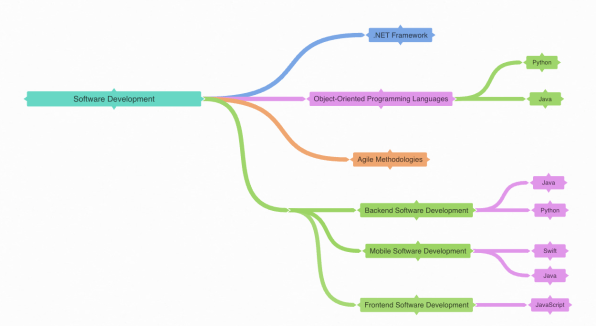
“What the skills graph does is dynamically map relationships across different entities,” says Xu. “We can map a member to different kinds of skills. We can map a job to different skills that it requires. We can map a company to different skills.” Rather than relying entirely on explicit facts contained in member profiles and job listings, this graph uses technologies such as machine learning and natural language processing to infer information that’s never directly stated. In total, it maps the connections between 875 million people, 59 million organizations, and 39,000 skills.
A new building block
As the skills graph came into focus, it had the potential to impact countless aspects of the LinkedIn experience. “I felt like I was in the Matrix when Hari and Ya started explaining this skills idea to me,” recalls Dan Roth, LinkedIn editor-in-chief, who oversees the platform’s content strategy. “This idea that everything that we do in our careers is built off of skills that we have.”
In March 2021, CEO Roslansky wrote A blog post introducing the graph. A year later, the company was able to point to multiple examples of it at work. For example, the LinkedIn Recruiter feature had begun surfacing job candidates based on relevant skills, such as proficiency in the Python programming language. And a new LinkedIn Learning feature called Pathfinder asked members about their career goals—such as “grow and advance in my current role” or “get a new job”—and recommended a course lineup to help them acquire the necessary skills.
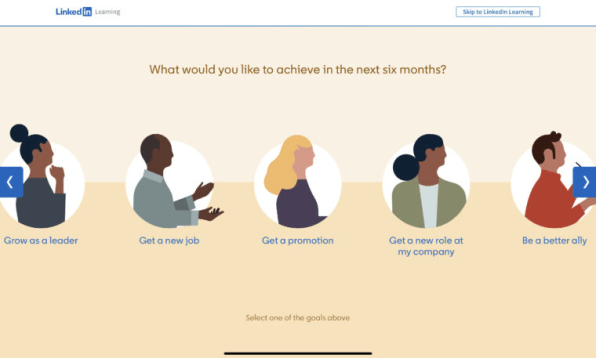
Rather than just throwing new features out there and seeing what happens, LinkedIn is taking an activist approach to getting everyone on the platform to think skills-first. In LinkedIn Recruiter, “we’ll actually give you nudges,” says Srinivasan. “And some of the nudges will be like, ‘If you want to expand your search because it’s not gender representative, these are different kinds of skills you may want to add.’”
As for job seekers, “one of the things that we can do in our products is to remind people when they have a high skill overlap [with an opportunity], which helps bring confidence, and helps the right people to apply to the right jobs,” says Shapero. He adds that doing this helps to make recruiting more equitable from a gender standpoint, as data shows that women, in particular, are more likely to apply for jobs when they have that confidence.
The data points that LinkedIn members can use to convey their skills have come a long way from the days when they involved random endorsements from friends. Last February, for example, the company announced new Professional Certificates that members can earn by taking courses with content from partners such as Zendesk. Overall, a LinkedIn profile can now encompass “everything from patents to certificates to work products to repositories of code,” says Srinivasan. “You can put anything you want there to prove the skill.”
Progress and potential
The best part of LinkedIn’s skills initiative is the hard data showing that it’s working. Today, according to Srinivasan, 44% of recruiters who look for candidates on the platform now take a skills-oriented approach to the hunt. “They’ll come in and say, ‘These are the skills I’m looking for, not just the title I’m looking for,’” he explains. “And that was a big change, because previously, the way the product worked, a lot of it was based on, ‘I’m going to come in with these titles and I’m going to start looking from there.’”
Of course, if 44% of recruiters have skills in mind when they find candidates on LinkedIn, it means that over half have yet to make that leap. If anything, the challenges of the current economic climate have intensified the company’s resolve to give members the best possible shot at career advancement, whether it’s at their current employer or somewhere new. And it knows there’s plenty left to be done.
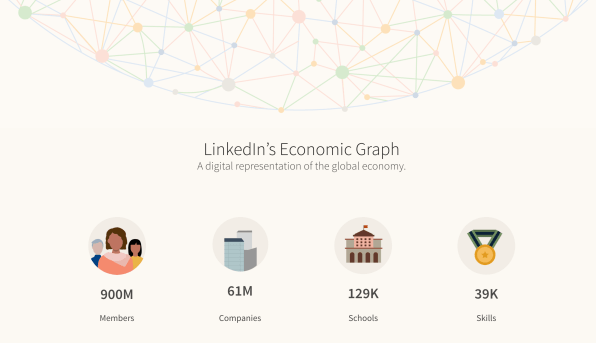
LinkedIn’s new focus on skills isn’t about a particularly moment, whether it’s the pandemic, recent layoffs, or the prospect of AI encroaching on human work. In the earliest days of the initiative, “it was around 2015 and the skillsets required for jobs have changed about 25% since then,” says Srinivasan. “If you think of the world seven years out, the number of skills changing is going to increase dramatically.” That calls for further investment in the skills graph—and all the features that LinkedIn can build on top of it.
“You’re going to see us invest a lot more around this idea of skills as the atoms that make up the professional world,” says Roth. “It changes how we think about the jobs you see and the content you see, and the kind of stuff we try to encourage you to talk about, and the knowledge we ask you to share, or the knowledge we put in front of you.”
(41)

